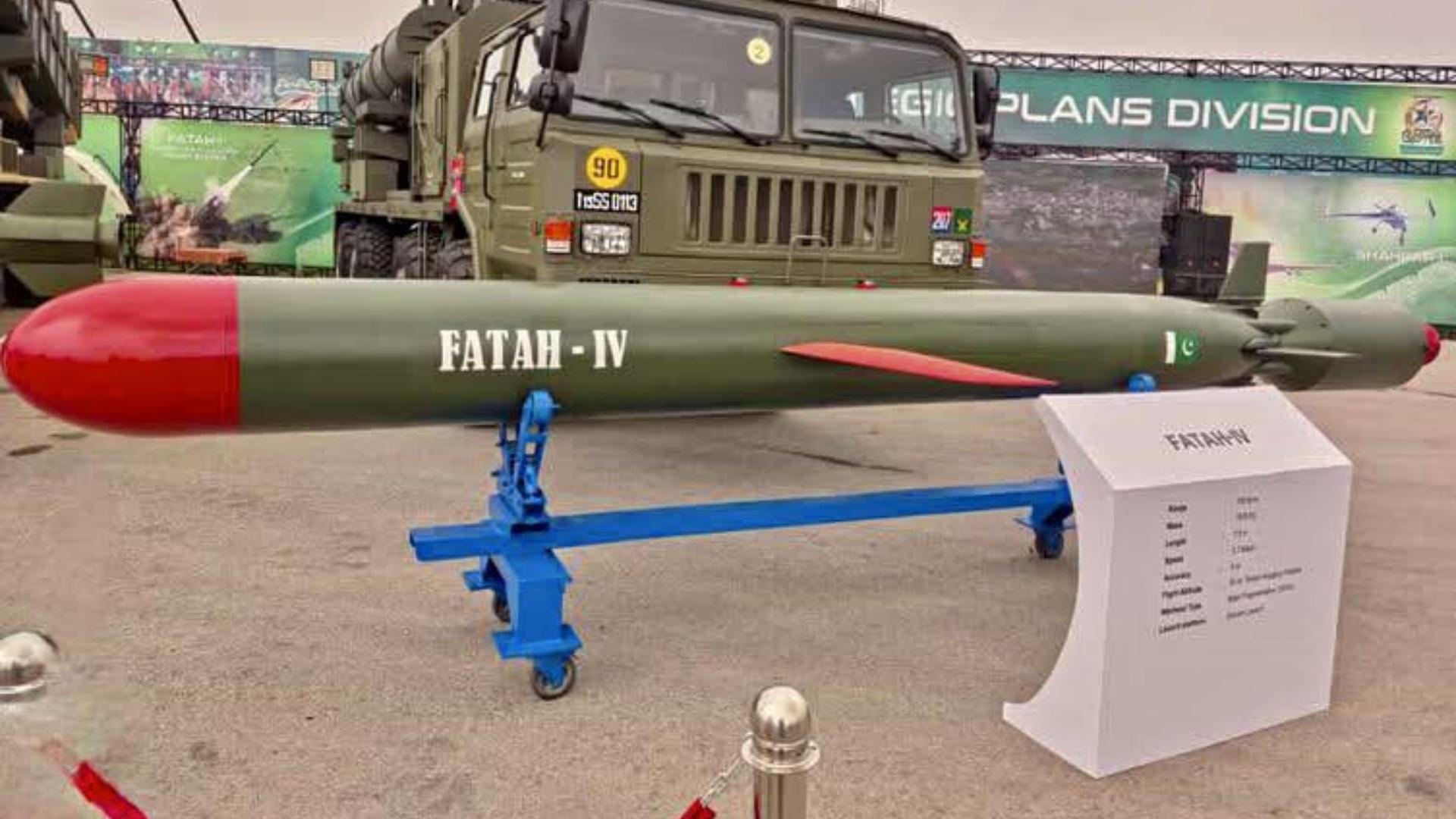13990Views

Pakistan’s New Fatah-IV Missile Signals New Conventional Strike Strategy Quwa Premium
In the lead up to its special event commemorating 14 August (the day Pakistan was formed out of British India), the Pakistan Army (PA) revealed the Fatah-IV: a land-attack cruise missile (LACM) with a range of 750 km.
Prior to this event, Quwa had assumed that the Fatah-IV would be a longer-range guided rocket or ballistic missile derived from the Fatah-II. Indeed, until this point, every Fatah variant was a guided rocket. Instead, however, it appears that the PA is now deploying LACMs as part of its long-range precision-strike capability.
The Fatah-IV’s official specifications are as follow:
- Range: 750 km
- Mass: 1,530 kg
- Length: 7.5 m
- Speed: Mach 0.7
- Accuracy: 5 m CEP
- Minimum Flight Altitude: 50 m
- Warhead Type: Blast Fragmentation
- Warhead Weight: 330 kg
The existence of the Fatah-IV was originally revealed during the 2024 Pakistan Day Parade, when the event announcers spoke of it as a future addition to the Fatah family of surface-to-surface missiles (SSM). At that time, there had also been a Fatah-III in development as a 450 km-range missile, however it appears that this design was re-designated as the Abdali Missile System, which the PA officially revealed and test-fired in May in the lead up to the recent conflict with India. It is unclear how – or if – the Fatah-III designation will now be used.
Apparently, the FATAH-4 was also displayed outside Jinnah Stadium. This would mark the first time the system has been unveiled to the public (it had been previously acknowledged to be in development). Interestingly, it bears a striking resemblance to the Harbah-NG, a subsonic,… pic.twitter.com/rx5GoeUxcF
— Kaz 🇵🇰 (@kozamli) August 12, 2025
Currently, it now appears that the “Fatah” designation is broadly being used to signify conventional long-range SSMs, be it ballistic or cruising. Meanwhile, the strategic (i.e., potentially nuclear-armed) systems are designated after historical rulers and generals, such as ‘Babur.’ Like the Harbah-NG anti-ship cruise missile (ASCM), the Fatah-IV is a derivative of the Babur LACM, which Pakistan originally deployed as a strategic rather than conventional weapon.
Earlier analyses on Quwa had anticipated that the PA would incorporate the Babur GLCM/LACM into its long-range strike strategy.
In 2021, following the reveal of the 140 km-ranged Fatah-I SSM, Quwa stated:
Thus, Pakistan could use the Fatah-1 as a long-range strike weapon, and potentially deploy it combination with precision-guided bombs (PGB), land-attack cruise missiles (LACM), and glide-munitions.
In 2024, Quwa added in an analysis of the PA’s evolving guided strike strategy:
The Fatah-series adds to the Babur-line of land-attack cruise missiles (LACM), thereby providing the PA with a well-rounded stand-off strike capability that reaches up to 700 km. However, one should expect the PA to pursue even longer ranged designs, potentially in excess of 1,000 km, in the future.
Overall, the PA could be viewing the Fatah and Babur as important assets for deprecating India’s combat capabilities by targeting the latter’s air bases, air defence sites, and other HVTs that, at least in prior years, would have been the primary focus of the Pakistan Air Force (PAF).
The PA’s push to develop independent strike capabilities was borne from its need to address India’s “Cold Start” doctrine, i.e., the threat of India using integrated battle groups (IBG) consisting of its air, armour, and artillery assets to rapidly enter and capture Pakistani territory. The Fatah-1 would enable the PA to engage intruding IBGs at a much earlier point and, in turn, slow the Indian advance. However, the Russia-Ukraine war likely steered the PA to expand its strike capabilities such that it could address India’s warfighting at a more general level (e.g., by targeting key installations), not solely the IBG threat.
Ultimately, the incorporation of a conventional Babur GLCM (i.e., Fatah-IV) was to be expected as it both extends the PA’s strike reach and offers a distinct vector for attack via low-altitude, terrain-hugging cruising (complementing the ballistic nature of the Fatah-I and Fatah-II SSMs). Tactically, the Fatah-family provides the PA with varied attack options, which it can leverage against different targets and scenarios.
End of excerpt. You’ll need to login or subscribe to Quwa Premium to access the full article.
Existing Quwa Plus/Pro members can log in below
Note: Logged in members may need to refresh the article page to see the article.


